Multan is one of the ancient towns in Pakistan. Beside its historical importance in the geo politics of Subcontinent, the city has been the hub of great sufis and saints who were the harbingers of Islamic teachings.
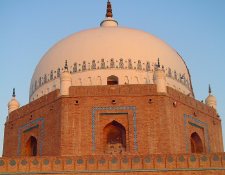
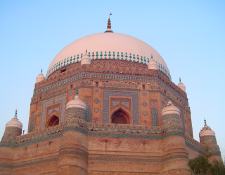
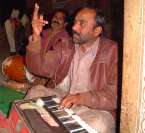
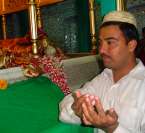
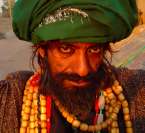
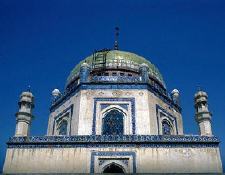
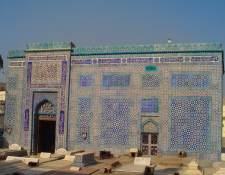
Just as Bahawalpur’s architecture is defined by its political heritage, Multan’s architecture is defined by its religious heritage. Multan is commonly described as the city of saints and shrines. Within the radius of twenty five miles, one finds hundreds of Mausoleums of those saints who propagated Islam in subcontinent with a message of love, peace, fraternity and tolerance and religious harmony.
Sometime back ATP carried a post on the Gateways of Multan. Today, I want to share this pictorial about the Multan’s saints and shrines.
 Sheikh Bahauddin Zakariya commonly known as Bahawal Haq was born in 1170 in Layyah. He went to Iran and received religious education from Sheikh Shahab-ud-Din Suhrawardy in Baghdad. After performing Hajj, and visited Jerusalem, Syria, Baghdad. On his return to subcontinent he settled in Multan in 1222 AD and preached his teachings.
Sheikh Bahauddin Zakariya commonly known as Bahawal Haq was born in 1170 in Layyah. He went to Iran and received religious education from Sheikh Shahab-ud-Din Suhrawardy in Baghdad. After performing Hajj, and visited Jerusalem, Syria, Baghdad. On his return to subcontinent he settled in Multan in 1222 AD and preached his teachings.
His Mausoleum is visited by thousands of people and has great number of followers in Southern Punjab and Sind. Many of his followers when arrive Multan, they put off their shoes as a gesture of respect to this sacred land (Multan Sharif).Shah Rukn-e-Alam was grandson of Bahawal Haq and continued the message of grandfather to the public at large. Thousands of people accepted Islam due to his inspirational teachings. He died at the age of 88 and was buried in the lofty dome built by Ghias-u-Din Tughlaq for himself.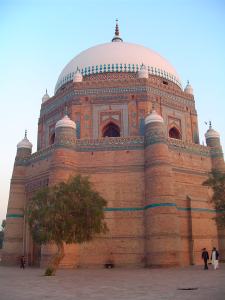
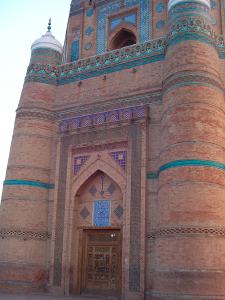
Beside religious importance of the Mausoleum (pictures above), its archeological value cannot be undermined. It is o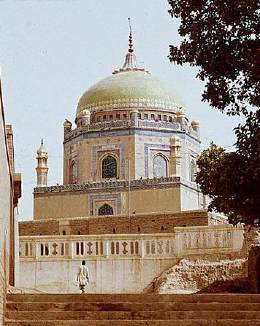 ne of the iconic building in Multan with loft dome that stands 100 feet high from the ground. The use of red bricks with wooden beams is ornamented with blue and white ceramic tiles (Multani tiles) brings a majestic beauty in the building.The descendents of this family have always been influential in government and politics. Makhdoom Shah Mehmood Qureshi is currently the custodian of this Mausoleum.
ne of the iconic building in Multan with loft dome that stands 100 feet high from the ground. The use of red bricks with wooden beams is ornamented with blue and white ceramic tiles (Multani tiles) brings a majestic beauty in the building.The descendents of this family have always been influential in government and politics. Makhdoom Shah Mehmood Qureshi is currently the custodian of this Mausoleum.
Shah Shams Sabzwari, also known as Shah Shams Tebrez, came to Multan in thirteenth century and preached his teaching among the inhabitants of the area. He died in 1276.
Many miracles are associated with his personality. Lot of people comes to this shrine (picture on the left) to pay homage.
Musa Pak Shaheed, was originally from Uch Sharif and descendant of Hazrat Abdul Qadir Jillani. He died in eleventh century and is buried inside the wall city called Pak Gate. The famous Gillani family is the descendant of Hazrat Musa Pak Shaheed.
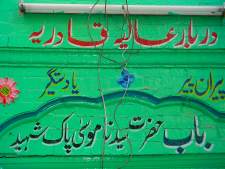
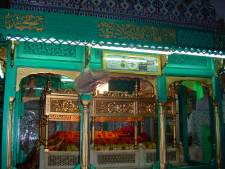

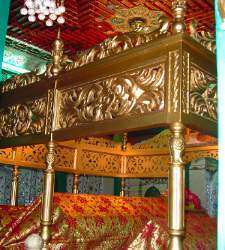
Yousaf Shah Gardezi came to Multan in 1060 and preached his teachings to his disciples. He died in 1088 AD and was buried inside Bohar Gate. He has rectangular Mauseleum with white and blue tiles. His descendant family is still very influential in the area.
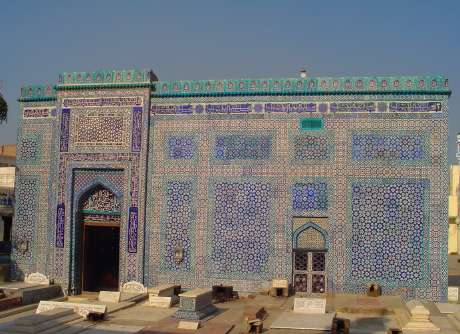
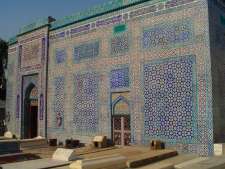
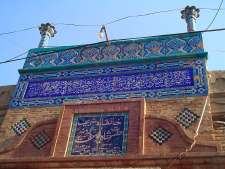
Following are some of the famous shrines in Multan.
- Shrine-Bibi Pak Daman
- Shrine-Hameed-ud-Din Hakim
- Shrine-Qutab-al-qutaab “Moj Dariya”
- Shrine-Syed Pir Sakhi Shah Hassan Parwana
- Shrine-Qazi Qutab-ud-Din Kashani
- Shrine-Syed Hasan Khanjzee
- Shrine-Hazrat Shah Dana Shaheed
- Shrine-Abu Hassan Hafiz Jamal-ud-din “Musa Pak Shaheed”
- Shrine-Hazrat Shah Kamal Qadari
- Shrine-Hafiz Muhammad Jamal Chisti Nazami
- Shrine-Pir Chup Wardi Waly
- Shrine-Mollana Hamid Ali Khan Naqshbandi
- Shrine-Allama Syed Ahmad Saeed Kazmi
- Shrine-Hazrat Khawaja Awais Khagga
- Shrine-Pir Syed Wali Muhammad Shah(Chadar Wali Sarkar)
- Shrine-Hazrat Gul Shah
Roshan Malik is a development practitioner; his earlier posts at ATP include one on the architecture of Bahawalpur. All pictures except those of the shrine of Shah Shams Sabzwari are by the author.



















































My paternal family’ hails from the Bohot Darwaza part of Multan. Though a Sanatani I am a devotee of Sufism.
I love their love oh universal brotherhood and the Qawallis are mesmerising.
Beautiful photos.
Pakistan is the beautiful country but Multan is more then beautiful because this city of Saints and Shrines & this site is more infromative and attractive,i like this site
Multan was one of the most important trading centers of medieval Islamic India and attracted a multitude of Sufi mystics in the 11th and 12th centuries, earning the city the nickname City of Saints